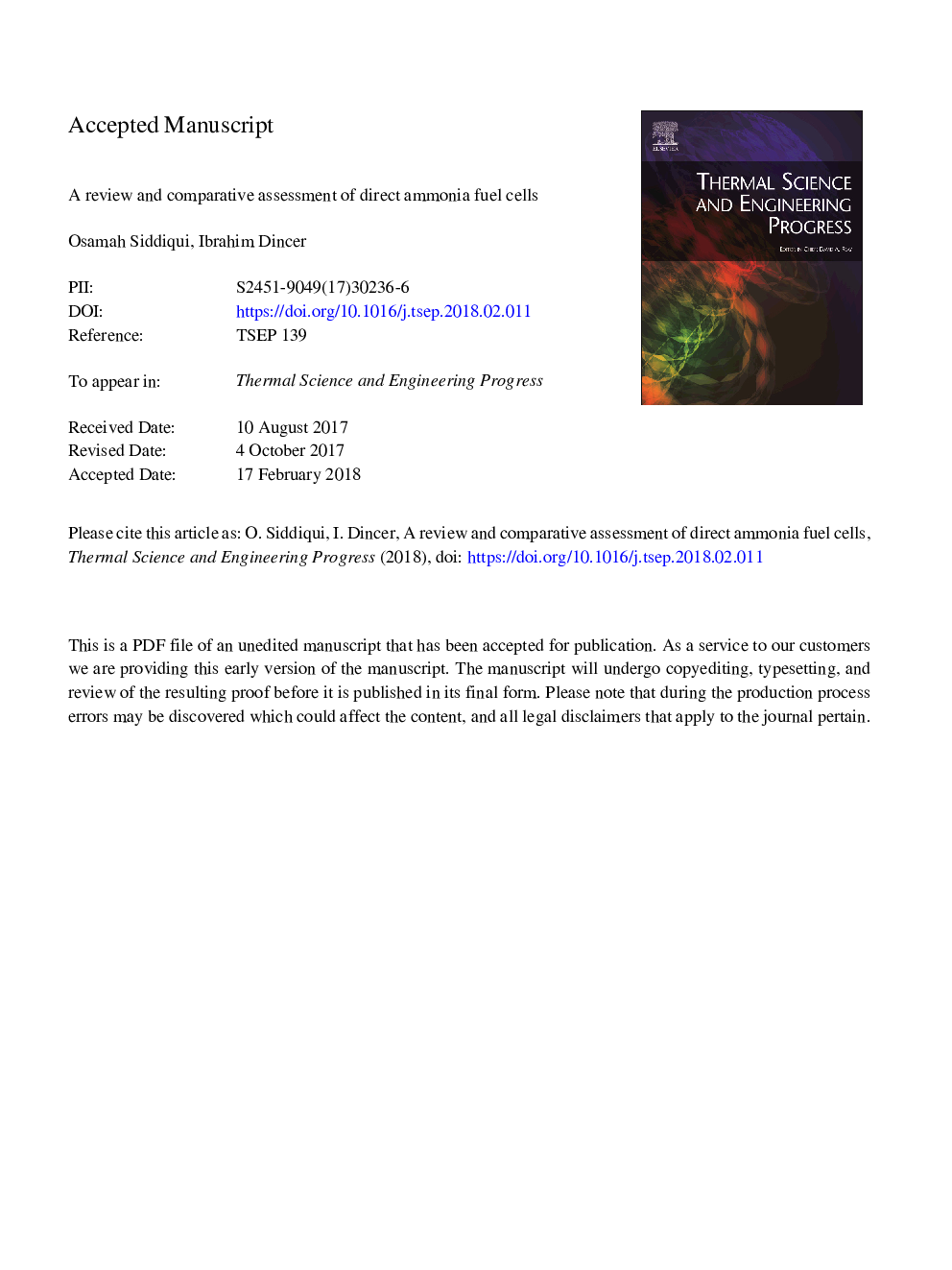| Article ID | Journal | Published Year | Pages | File Type |
|---|---|---|---|---|
| 8918823 | Thermal Science and Engineering Progress | 2018 | 37 Pages |
Abstract
In this study, we present a comparative assessment of direct ammonia fuel cells and a discussion of these from various perspectives by considering the effective criteria. The effect of electrolyte and electrode materials, electrolyte thicknesses and operating temperatures on the performance of direct ammonia fuel cells are studied and discussed comparatively for evaluation purposes. A comparison of which cell types and configurations provide the optimum performance is conducted by utilizing the experimental results reported in the literature. The results of this study are expedient to provide important inferences about the performances of direct ammonia fuel cells. Ammonia fed oxygen ion conducting Samarium doped ceria electrolyte based solid oxide fuel cells have comparatively the highest peak power density of 1190â¯mW/cm2 when operated at 650â¯Â°C with a 10â¯Âµm thick electrolyte. Direct ammonia proton conducting electrolyte based solid oxide fuel cells have lower cell performance than oxygen ion conducting fuel cells due to the dilution of hydrogen at the anode by undecomposed ammonia as well as formed nitrogen gas. The operating temperature of the fuel cell and electrolyte thickness affect the cell performance considerably. A 200â¯Â°C increase in operating temperature increases the peak power density by nearly three to four times for ammonia fed solid oxide fuel cells. The molten alkaline electrolyte based fuel cells can be a promising technology. Further research is required for these type of fuel cells to investigate their performance with low electrode separation distance and more conductive alkaline electrolytes.
Related Topics
Physical Sciences and Engineering
Energy
Energy Engineering and Power Technology
Authors
Osamah Siddiqui, Ibrahim Dincer,
